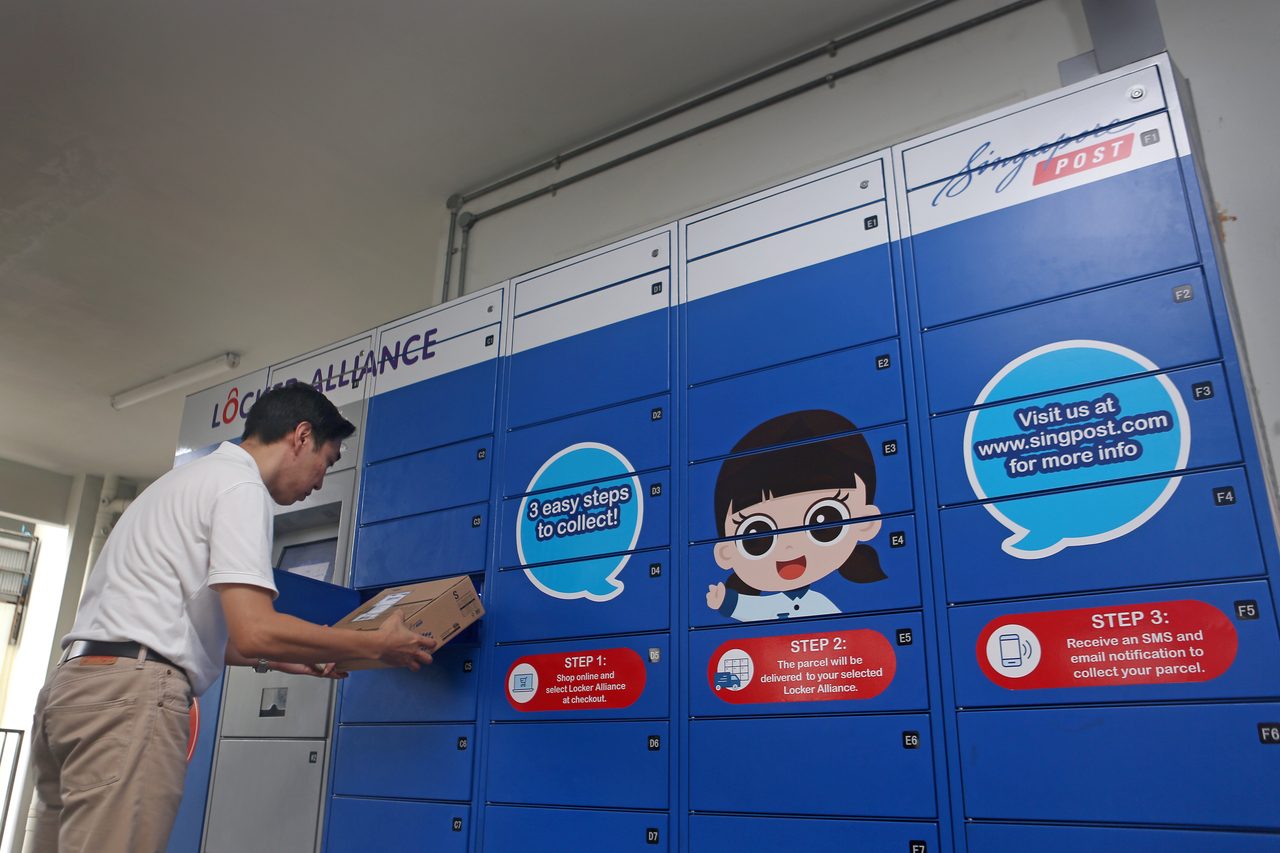Parliament: Nationwide network of 1,000 parcel locker stations to be rolled out by end-2022
Sign up now: Get ST's newsletters delivered to your inbox

The nationwide network of 1,000 stations will be progressively rolled out and located in HDB estates, MRT stations and community centres.
PHOTO: ST
Lester Wong
Follow topic:
SINGAPORE - Online shoppers will soon be able to collect their packages from parcel locker stations located within five minutes' walk of all Housing Board blocks.
This nationwide network of 1,000 stations will be progressively rolled out by end-2022 starting from this year, and will ease the woes of a delivery sector hard hit by the rise of e-commerce.
Stations will be located in HDB estates, MRT stations and community centres. The initiative was announced by Senior Minister of State for Communications and Information Sim Ann on Tuesday (March 3).
"In Singapore, the popularity of e-commerce has led to a steady increase in parcel deliveries. But given Singapore's urban context and consumers' busy lifestyles, doorstep deliveries often mean missed deliveries," said Ms Sim during the debate on the Ministry of Communications and Information's budget.
"Our postal infrastructure must evolve to offer practical alternatives to doorstep deliveries."
Ms Sim was replying to Nominated MP Mohamed Irshad's question on the future of post.
The network will be available for use by all e-commerce and logistics service providers. Each station will feature lockers of different sizes to accommodate most kinds of packages. The number of lockers at each station has yet to be finalised, but is expected to vary across districts due to different demographics.
Couriers deposit parcels into the lockers by scanning a barcode. An SMS notification is then sent to the consumer with a PIN number, which the consumer has to input at the station to retrieve the package.
The nationwide rollout of locker stations follows a successful trial launched in December 2018 by the Infocomm Media Development Authority (IMDA).
IMDA worked with 18 companies, including e-commerce platforms such as Qoo10 and Zalora, and logistics service providers such as Singapore Post (SingPost), to deploy 62 locker stations in Punggol and Bukit Panjang.
Results from the pilot showed that a driver was able to deliver up to 250 parcels a day to the parcel lockers, about four times more deliveries compared with doorstep deliveries.
This increased delivery efficiency may result in more competitive delivery prices for consumers, Ms Sim added.
Air steward Lim Chee Keong was one of the consumers who benefited from the 2018 trial.
Mr Lim, 48, who lives in Bukit Panjang, said he collects purchases from locker stations about once a month.
"It's very convenient because I don't have to plan my schedule around when the delivery guy comes (to my doorstep).
"I can even go after midnight if I want," he added.
"I'm lucky to have many locker stations near my home, and it's good to know that this will be the case for more people soon."
The rise of e-commerce has put tremendous pressure on Singapore's delivery sector. Around 200,000 parcels are delivered daily in Singapore.
Earlier last year, SingPost was hit with a record $400,000 fine for failing to meet government delivery standards for postal services over the previous two years.
It attributed the lapses largely to the growth of e-commerce, which had strained a postal system built primarily for letters.
For example, postmen had to deliver packages too large for letterboxes to doorsteps.
Separately, local small and medium-sized enterprises (SMEs) are getting more help to expand overseas through a new component of the SMEs Go Digital programme, called Grow Digital.
The joint IMDA and Enterprise Singapore initiative will connect SMEs with e-commerce platforms that provide services such as smart matching with overseas clients and integration with logistics companies to deliver their products.
Grow Digital is expected to be launched in the second quarter of this year.
The $80 million SMEs Go Digital programme, which was launched in 2017, will also be expanded to provide digital solutions and Industry Digital Plans (IDPs) for companies in 23 sectors, up from the current 10.
New industries include the construction, food manufacturing, and early and adult education sectors.
The sector-specific IDPs provide SMEs with a step-by-step guide on digital solutions to adopt, and relevant training for employees, said IMDA.

